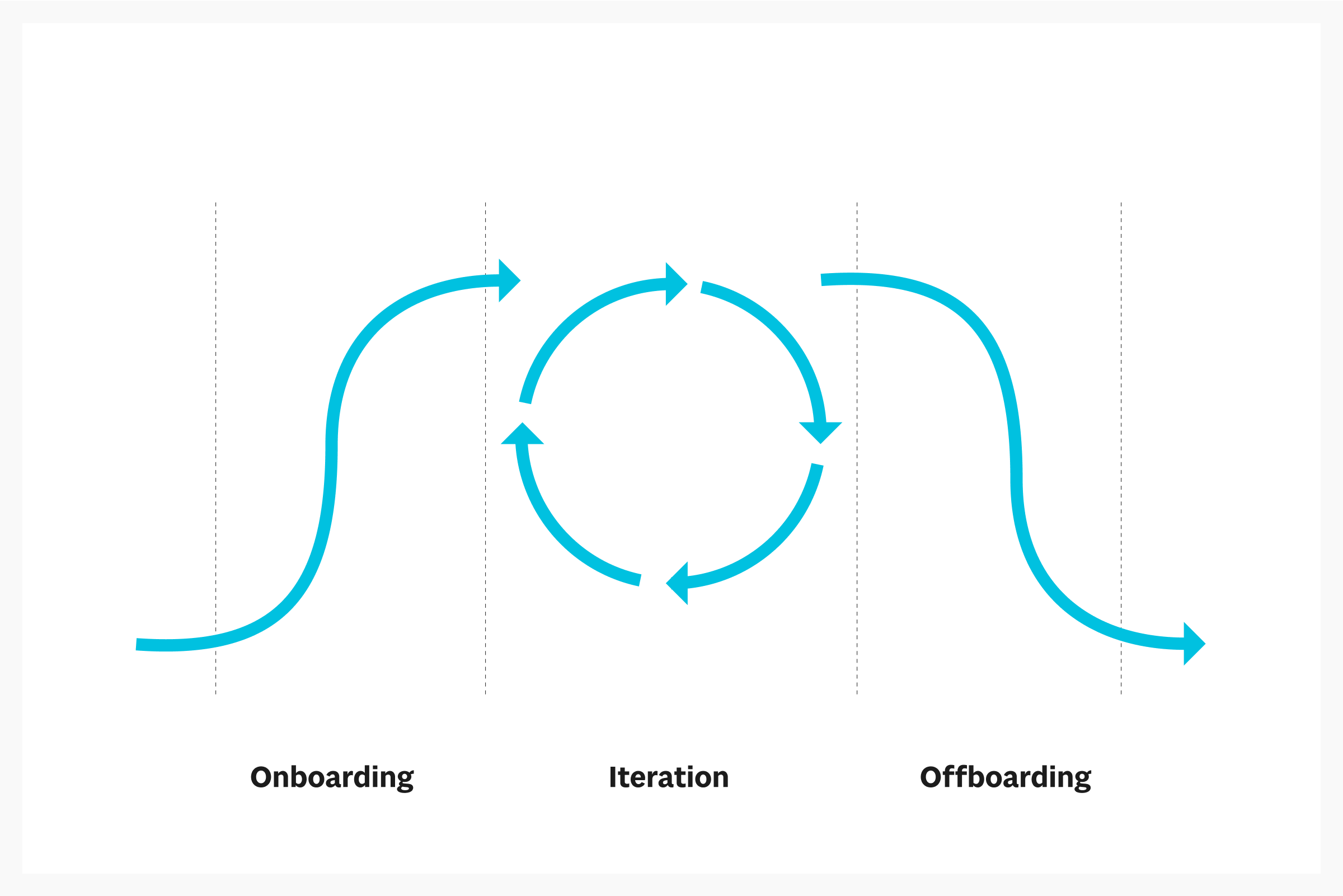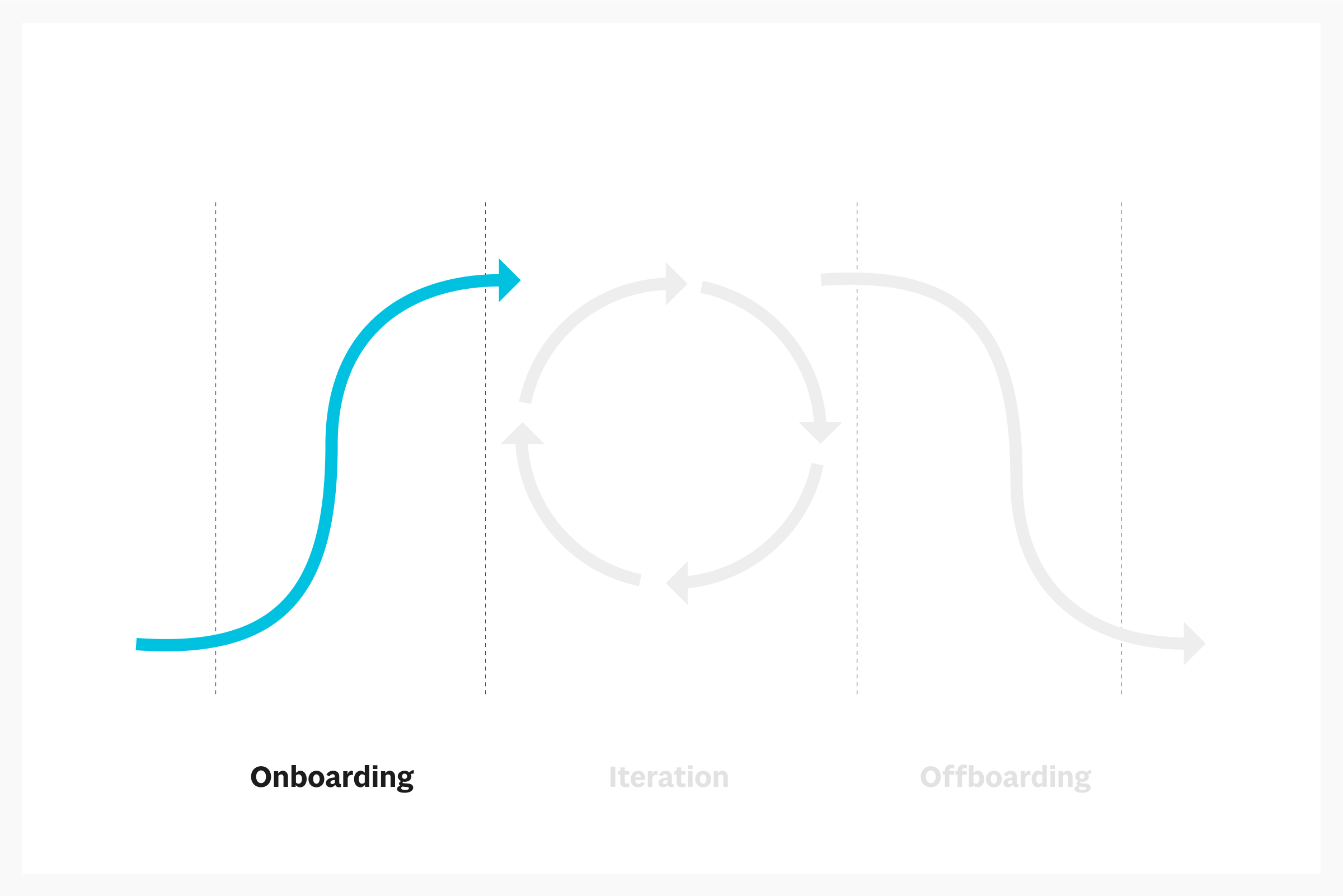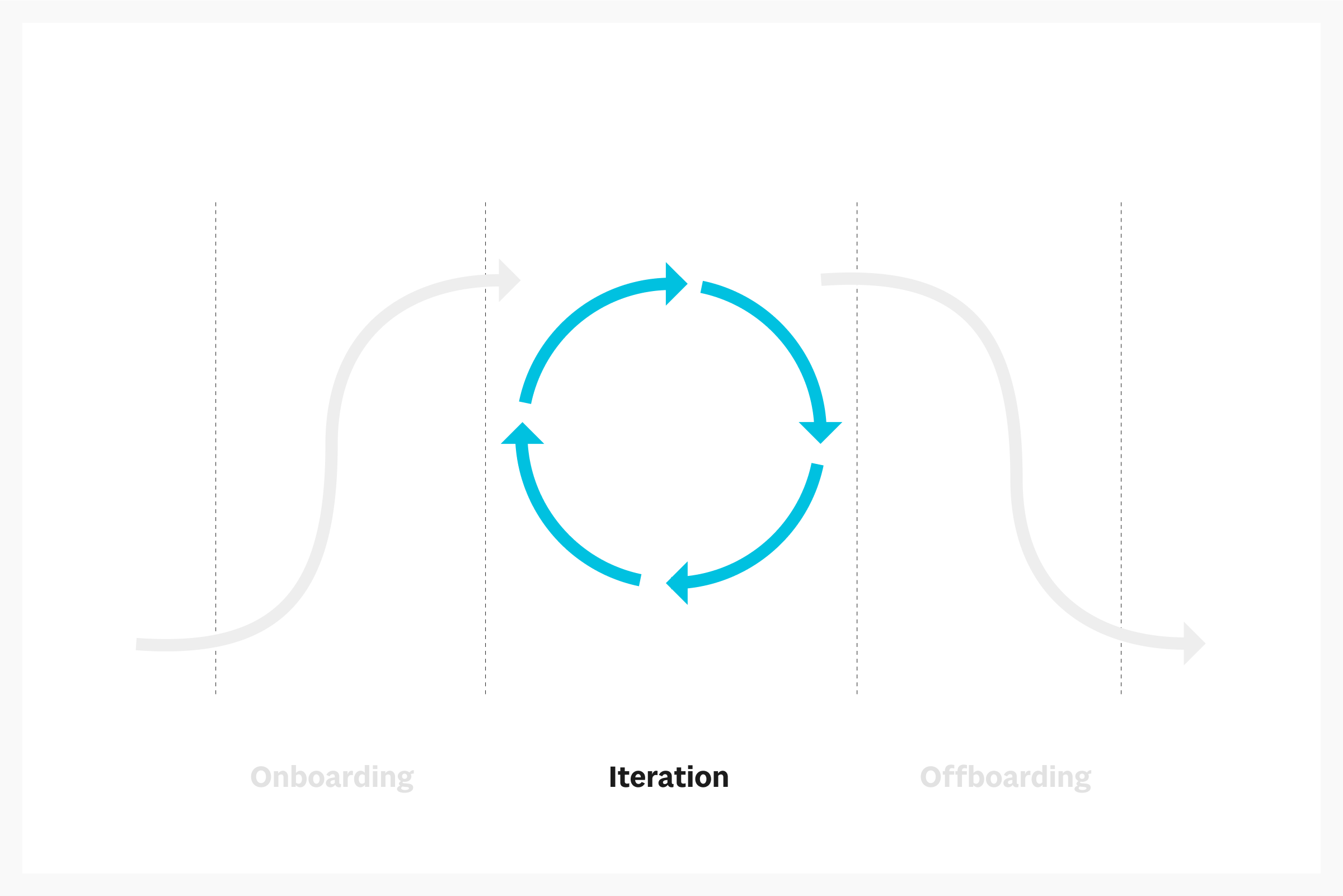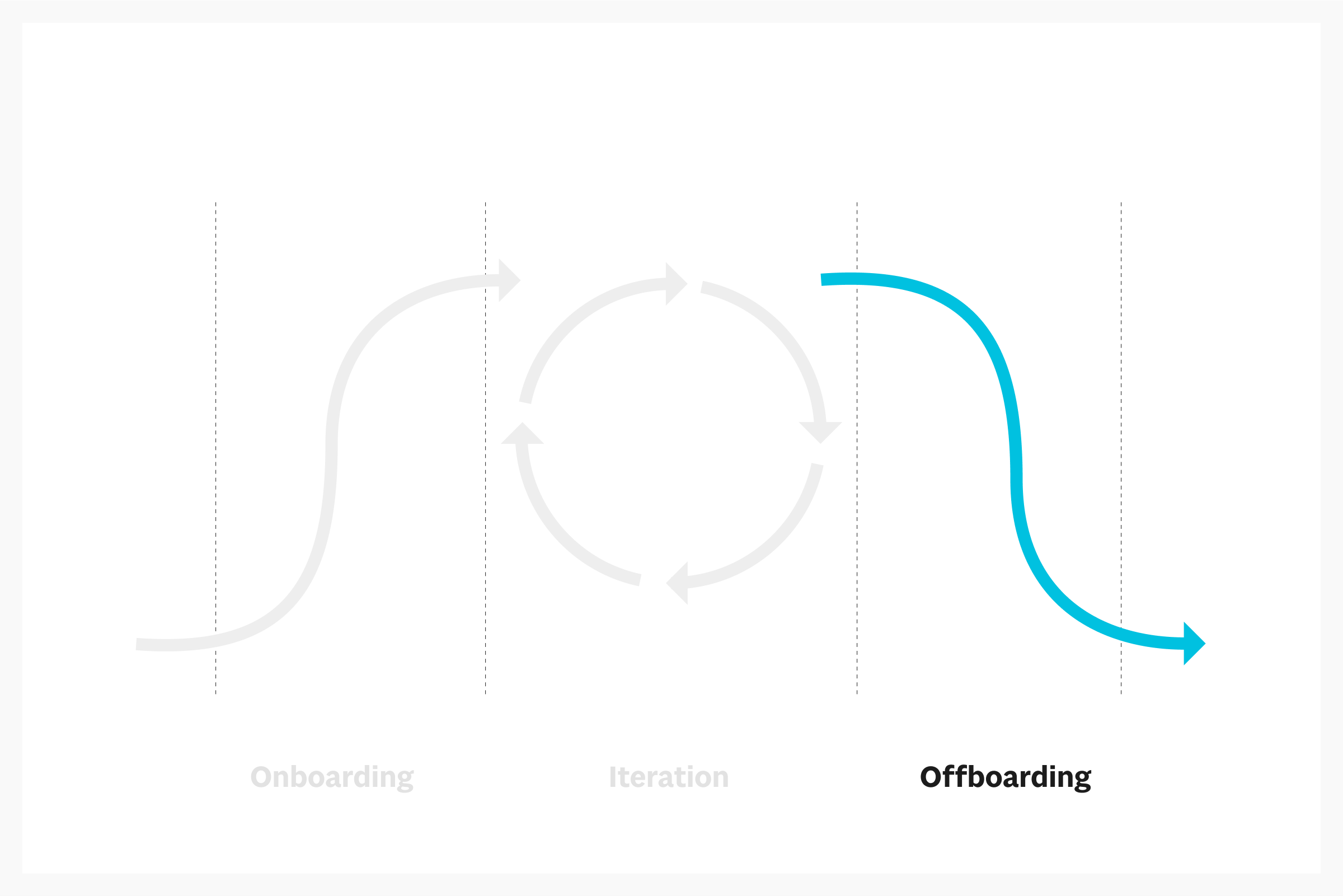For many people, choosing a software development partner is one of the most significant decisions they’ll make in a year—or many years. The stakes are high, and there’s no shortage of partners ready to tell you that they can give you everything you’ve ever dreamed of. Making a wise decision involves not only vetting technical skills but understanding the culture and experience that your candidates bring to the partnership. “What’s it like to work with Sparkbox?” is a very common question and one that we’re more than happy to answer.

We divide our process into three parts: onboarding, iterating, and offboarding. Onboarding is where we make sure that we have clearly defined what we are trying to achieve together and remove any roadblocks to progress. Iteration is where we actively solve problems and deliver solutions while constantly ensuring that our earlier planning is still correct. During offboarding, we make sure we end our engagement well and set up our partners for long-term success.
Our approach has evolved over more than a decade. It goes without saying that every client is different, from startups to multi-billion dollar ecommerce giants. We build plenty of flexibility into the process to accommodate their varying needs and requirements. But from a big picture standpoint, this is what you can expect.
Onboarding

We think of onboarding as everything that happens between the moment we decide to work together and the moment that you’re fully engaged with a right-sized team, working productively and at velocity. We think it’s important to give the onboarding process as much time as needed to avoid the most costly mistake in software development: solving the wrong problem. Let’s look more closely at what is likely involved at this stage.
SOW Expectation Meeting
Nothing derails a new engagement more quickly than a miscommunication stemming from our very first conversations. We’ll schedule a time to talk through the details of the SOW with your team. Sparkbox attendees will not be limited to biz dev-y people (like me) who won’t actually be involved in the execution of the SOW. They’ll be the people that you’ll likely be working with on a daily and weekly basis. We’ll carefully walk through the SOW and make sure that everyone has a chance to share their assumptions and get feedback. If there are opportunities to clarify the language to make sure that it reflects our shared vision for the engagement, we’ll do so.
This is also a good time to have a very frank conversation about timing. If you know that approvals at your company take eight weeks on the product side plus another four of legal review, we’d like to know that, too! Let’s begin as we hope to continue: honest conversations and shared expectations. The first SOW signature usually takes place after this meeting.
Experience tells us that every project, no matter how long-awaited and well planned, contains unknowns. Limiting the first SOW to a period of work focused on shining a light on the unknowns ensures that future plans can be scoped with more accuracy. Future SOWs, which we’ll get to in a moment, will often reach farther into the future.
Client Questionnaire and Access Initiation
Starting a new partnership comes with lots of questions. Lots. We’ll have questions for your business office, questions for your technical team, and questions for the project managers and product owners. They range from “where should we send invoices?” to “what kind of access can you give us to your systems?” Sometimes clients require background checks. Sometimes they prefer to send their own hardware to our team members. We’ve designed a questionnaire to help dig into all paths of inquiry and ensure that no stone is left unturned. Remember, the goal of our onboarding process is to ensure that once we get up-to-speed, there are no surprises and no barriers to productive work together. Thanks to your feedback via this questionnaire, by the time the SOW is signed we’ll already have the access we need to get moving.
Kick-Off Meetings
Your Sparkbox project manager (your new best friend) will set up initial meetings to kick-off the engagement between your team and ours. On those calls, we’ll talk about project cadence, milestones, and next steps. Drew Clemens, our director of delivery, will join to talk more about our expectations for collaboration between teams. We’ll also use this time to agree on next steps.
Investigating the Project Landscape
Finally! This is where the rubber meets the road for the first phase of the engagement. Sparkbox has been committed to in-depth discovery and strategic planning for years, and we’ve got a big toolbox of tactics and ideas that we can pull from for every project based on the needs of our clients. Some of the activities that are often involved in the information gathering phase include:
Documentation Review
User Research
Stakeholder Interviews
Content Audit
Focus Groups
UX Testing
Technical Audit/Assessment
Design System Audit/Assessment
Accessibility Audit
Prototyping
Wireframing
Backlog Building
Discussion of Requirements and Documentation
As I said, we’ve got a lot of tools to choose from—we’re not just hitting nails with a hammer. Conversations with you will help us understand your needs and select the right approaches for your team. The point of this work is not only to find the answers to the questions that you’ve asked us, but also to surface the questions that you didn’t think to ask. That speaks to the kind of partner that we want to be: contributing to your vision for success in every way that we can.
Recommendations Development
Once we’ve completed the investigation described above, we take everything we’ve learned—from you, your users, your stakeholders, your development team, and everyone else we’ve talked to–and use the information to create a set of recommendations to chart a clear path forward. Of course, not every client is following the same path. Some may want a brand new product, some may have plans to refine and improve a trusted piece of software, some may just want help with long-term thinking about user experience and accessibility. Regardless, our objective is to end the onboarding process by defining an approach that’s customized to the needs and resources of your team and solves your most pressing challenges.
We translate this information into a correctly-sized Sparkbox team and an idea of how long they should be assigned to your work. Typically, you can expect the recommendations to include things like a project brief (timeline, goals, and measures of success), a creative brief (highlighting UX and design strategies), and a technical strategy (technical recommendations).
Typically our recommendations will include an SOW for the next phase of work. This is typically a three-month chunk of time, but we have plenty of flexibility if another approach makes more sense to you. Ideally, we’ll time this so that your new SOW is signed before or just as your first one expires so that we can keep moving forward together seamlessly.
Iteration

Everything about our onboarding process is structured so that when we get to the iteration phase, we have a roadmap, the right skill sets and experience, and a shared understanding with you about how to move forward. Once we reach the iteration phase, we intend to work at full velocity for the duration of our partnership—bringing in the team members that you need, when you need them.
Typically, Sparkbox works in one- or two-week sprints, which is a window of time long enough to accomplish something meaningful, but short enough to keep a small feedback loop.
This approach doesn’t work without active participation from our clients. You might hear Drew Clemens, our director of delivery, good-naturedly describe Sparkbox as “needy.” This means that we never seek to work in a black box or behind a curtain. We want (and require!) active collaboration from our clients. Your project manager will make sure you understand what we need from you in terms of feedback, participation, regular standups, and demos to demonstrate progress and affirm direction. We also have retros throughout the project to examine how we’re working together and make improvements where we can, which can benefit the project (or the budget or timeline.) The rhythm of our work together relies on our ability to be accountable and responsive to one another.
Onboarding ensures that we start the iteration phase with clear objectives, but we’re always mindful of the need for flexibility and the possibility of change. Every sprint has the potential of bringing new information to light, and during the iteration phase of work, we’re sensitive to the need for change. If we (working collaboratively with your team) identify a better way forward, we’ll work with you to adjust the plan and take the more efficient, faster, or effective path forward. Another way to look at this is that the mistake window is only a week long. It’s not possible for us to spend a lot of time (and budget) going left if we should be going right. Short sprints minimize risk.
Typically during the iteration phase of work, our SOWs define three or six-month cycles, although some clients prefer to plan for a full year.
During iteration we will also have regular status checks and updates. It makes sense for Sparkbox and our clients to have very direct conversations about budgets because the best surprise is no surprise at all. We also believe that bad news should travel at the same speed as good news. This means we are not afraid to share when something did not go as planned. These are moments we believe will make us better partners in the long run.
Offboarding

Many of our most successful client relationships last for years, but sometimes there is a natural moment when it makes sense to part ways. It may be that we’ve achieved the objectives that we agreed on at the beginning of the engagement. Perhaps you’ve grown your internal team to a point where you’re ready to take on more responsibility internally. Maybe your organization is excited to focus on other priorities for a while. We would consider any of these to be examples of a successful partnership that has accomplished what it set out to do.
Once you tell us that you’re ready to move in a new direction, it’s time for the offboarding process to begin. We ask for at least 30 days’ notice to prepare for this transition, although three months is more typical. Offboarding gives us a chance to do more than just finish a sprint and walk away. Instead, we can spend time preparing you to assume responsibility for your products and either maintain or continue to evolve them.
Just as every onboarding process is different, offboarding is structured around the individual needs of your team. For some, documentation is key. If you’re reaching the end of a development process, there will be final releases to handle and testing to complete. If you’re growing your team or anticipating that you’ll be taking on tasks that Sparkbox has handled in the past, having accurate documentation will make the transition a smooth one, so we’ll spend time ensuring that there’s as much detail as possible and potentially training for your team. And if you need to increase the size of your team to handle products moving forward, we can even assist with planning job responsibilities and interviewing. We’ll work through the transfer of ownership of assets, repos, and any related deliverables back to your team. Just as we did during the onboarding process, we’ll have direct and clear conversations with you about your needs and where you want to go from here.
When we reach the end of our last sprint and the end of our last contract, we’ll have done everything possible to get you ready for your next steps. Ending a partnership well is a big part of being a good partner, and it’s something that we take a lot of pride in. And who knows what the future may bring. It may be that offboarding is just goodbye for now, and we’ll join forces again in the future.
Does this sound like the kind of partnership you’re looking for? Give me a call and let’s talk about how it could work for you.

